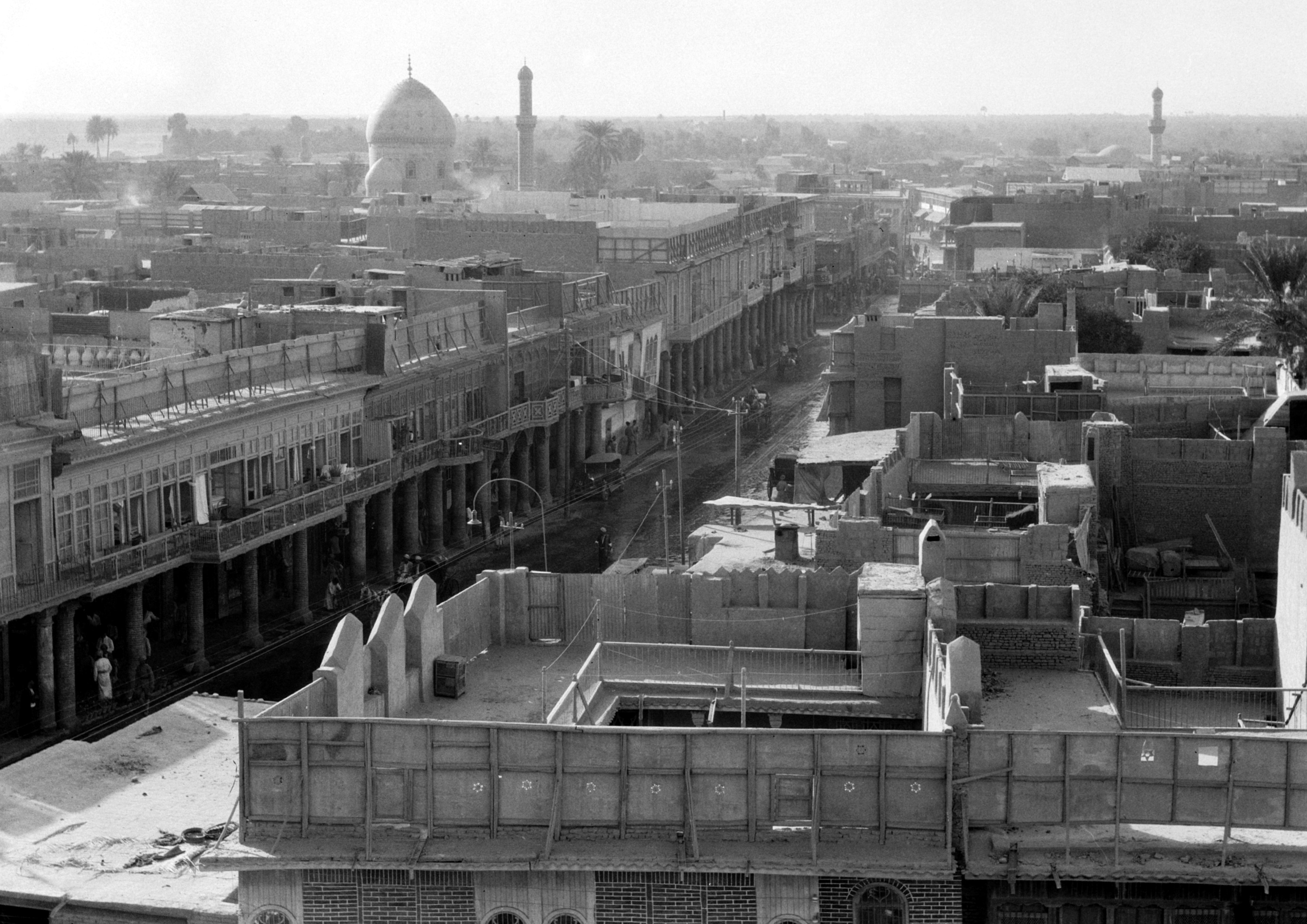Al Rasheed Street on:
[Wikipedia]
[Google]
[Amazon]

 Al Rasheed Street or Al Rashid Street (
Al Rasheed Street or Al Rashid Street (

 Al Rasheed Street or Al Rashid Street (
Al Rasheed Street or Al Rashid Street (Arabic
Arabic (, ' ; , ' or ) is a Semitic language spoken primarily across the Arab world.Semitic languages: an international handbook / edited by Stefan Weninger; in collaboration with Geoffrey Khan, Michael P. Streck, Janet C. E.Watson; Walter ...
: شارع الرشيد) is one of the main streets in downtown Baghdad
Baghdad (; ar, بَغْدَاد , ) is the capital of Iraq and the second-largest city in the Arab world after Cairo. It is located on the Tigris near the ruins of the ancient city of Babylon and the Sassanid Persian capital of Ctesiphon ...
.
Its origin dates back to the Ottomans who ruled Iraq
Iraq,; ku, عێراق, translit=Êraq officially the Republic of Iraq, '; ku, کۆماری عێراق, translit=Komarî Êraq is a country in Western Asia. It is bordered by Turkey to Iraq–Turkey border, the north, Iran to Iran–Iraq ...
from 1534 to 1918. During that time, the only known public street in Baghdad was Al Naher Street (Shari al-Naher). Al Naher means river - the street stretches a few kilometers along the east banks of the river Tigris
The Tigris () is the easternmost of the two great rivers that define Mesopotamia, the other being the Euphrates. The river flows south from the mountains of the Armenian Highlands through the Syrian and Arabian Deserts, and empties into the ...
, so this may be the reasoning behind its name.
The British were defeated by the Ottomans on April 29, 1916, in Kut (south of Baghdad), where tens of thousands of Anglo-Indian troops died or were wounded, and thousands more were taken prisoner, including their commander Sir Charles Townshend
Charles Townshend (28 August 1725 – 4 September 1767) was a British politician who held various titles in the Parliament of Great Britain. His establishment of the controversial Townshend Acts is considered one of the key causes of the Ame ...
. The military governor of Baghdad, Khalil Pasha (1864–1923), decided to honor this victory by giving orders to build the first ever "real" street in Baghdad. Work began in May 1916, after the head of Baghdad's municipality, Ra'ouf Al Chadirchy, met with local landlord
A landlord is the owner of a house, apartment, condominium, land, or real estate which is rented or leased to an individual or business, who is called a tenant (also a ''lessee'' or ''renter''). When a juristic person is in this position, t ...
s to pay them compensations for the demolition of their property.
The street was first opened for the public on July 23, 1916. The first name given to the street was by Khalil Pasha who named the street "Jadde Si". The name of the street was then inscribed on a ceramic plate
A ballistic plate, also known as an armour plate, is a protective armoured plate inserted into a carrier or bulletproof vest, that can be used stand-alone, or in conjunction with other armour. "Hard armour" usually denotes armour that uses balli ...
and placed on the main wall of Sultan Ali Mosque
A mosque (; from ar, مَسْجِد, masjid, ; literally "place of ritual prostration"), also called masjid, is a place of prayer for Muslims. Mosques are usually covered buildings, but can be any place where prayers ( sujud) are performed, ...
. The sign lasted until the mid-1950s.
In 1917, Al Rasheed Street was the first street to be electrically illuminated in Baghdad city.
References
Rasheed Rasheed {{Iraq-geo-stub